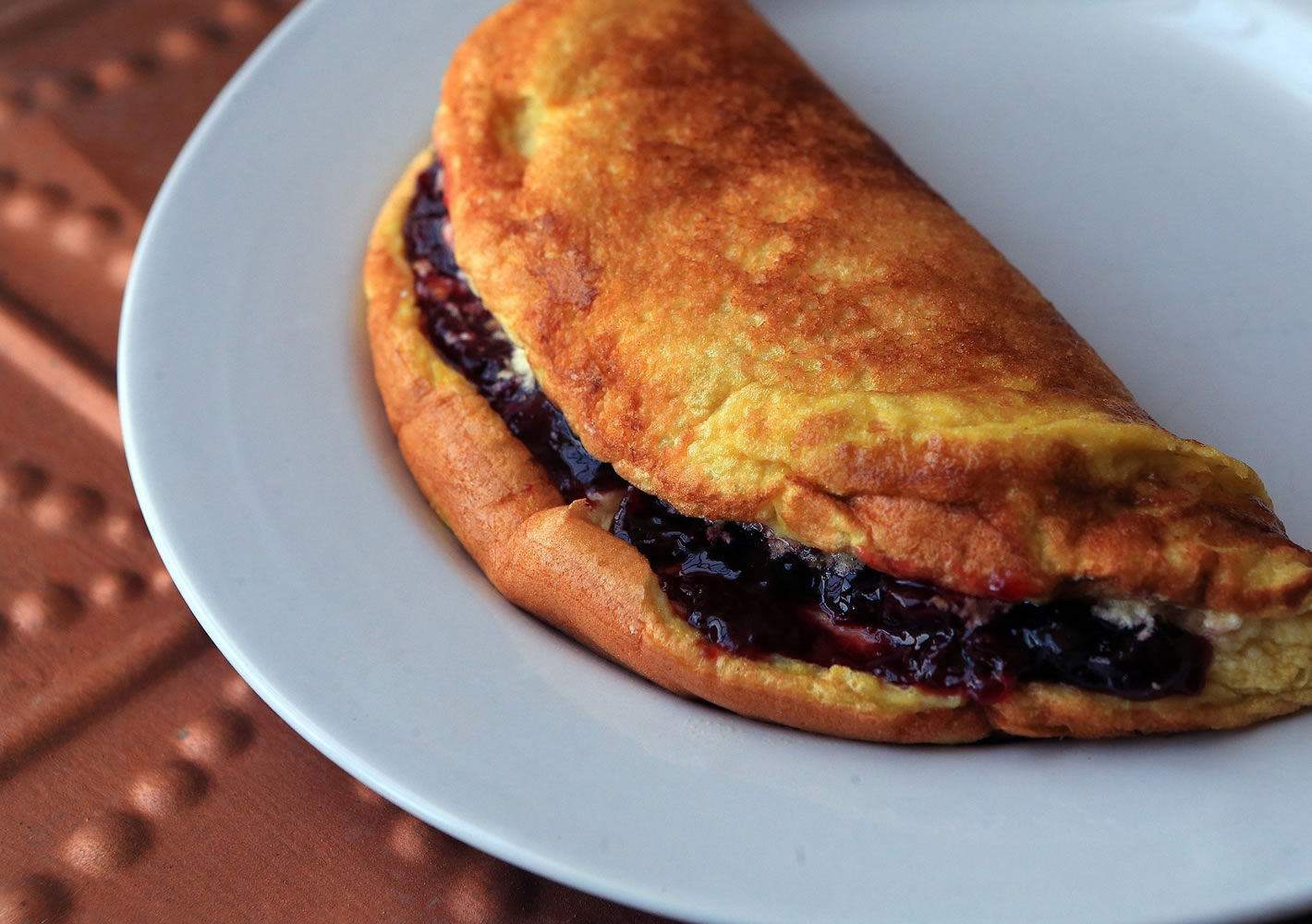6 eggs
1 teaspoon baking powder
1 teaspoon salt
1/4 teaspoon freshly ground black pepper
2 cloves garlic, peeled and sliced
1/2 cup finely chopped fresh chives or scallions
1 cup finely chopped fresh parsley leaves
1/2 cup finely chopped fresh cilantro leaves
1/3 cup fresh chopped dill or 2 tablespoons ground dill
1 large potato, peeled, cooked and mashed, or 2 tablespoons all-purpose flour
2 tablespoons oil or melted butter
Preheat oven to 350 degrees.
Break eggs into a large bowl. Add baking powder, salt and pepper. Beat with a fork. Add garlic, chives, parsley, cilantro, dill and mashed potato or flour, and mix together thoroughly.
Place butter or oil in an 8-inch ovenproof baking dish or skillet and put dish in the oven for 10 to 15 minutes. Pour in the egg mixture and bake uncovered for 30 minutes or until a light golden brown. Serve from the baking dish or a platter. Cut into small pieces and serve hot or cold.
Per serving (based on 6): 162 calories; 10 g fat; 2 g saturated fat; 186 mg cholesterol; 8 g protein; 12 g carbohydrate; 1 g sugar; 1 g fiber; 549 mg sodium; 99 mg calcium.
EGG STRATA
Yield: 4 to 5 servings
Recipe adapted from the Milwaukee Journal Sentinel.
1/2 loaf of white bread, crusts removed, cut into cubes
1/2 pound bacon or bulk breakfast sausage, or ¾ cup cubed ham
1/2 tablespoon butter
1/2 pound sliced fresh mushrooms
Salt
5 eggs, beaten
1 1/4 cups whole milk
1/3 pound (5 ounces) shredded cheddar cheese
1/2 teaspoon dry mustard or 2 tablespoons Dijon mustard
1/4 pound asparagus, bottom few inches removed
Note: Recipe can be easily doubled. Cook in a 9-by-13-inch baking pan.
Place bread in a buttered 8-by-8-inch baking dish. If using bacon, cut into 1-inch strips and fry until crisp. For sausage, fry, crumble and drain. For ham, cook in a nonstick pan, turning, until browned and heated through.



